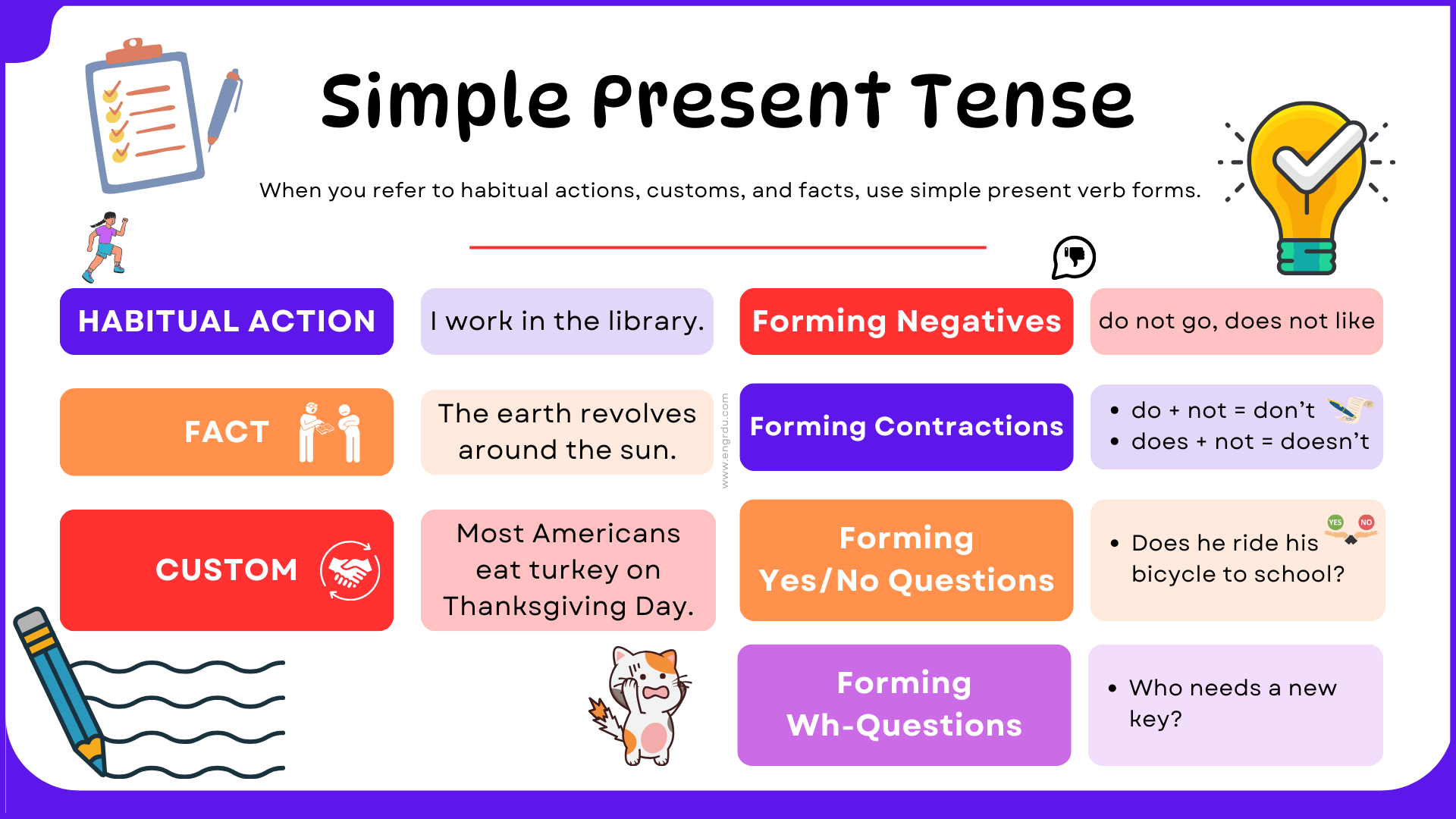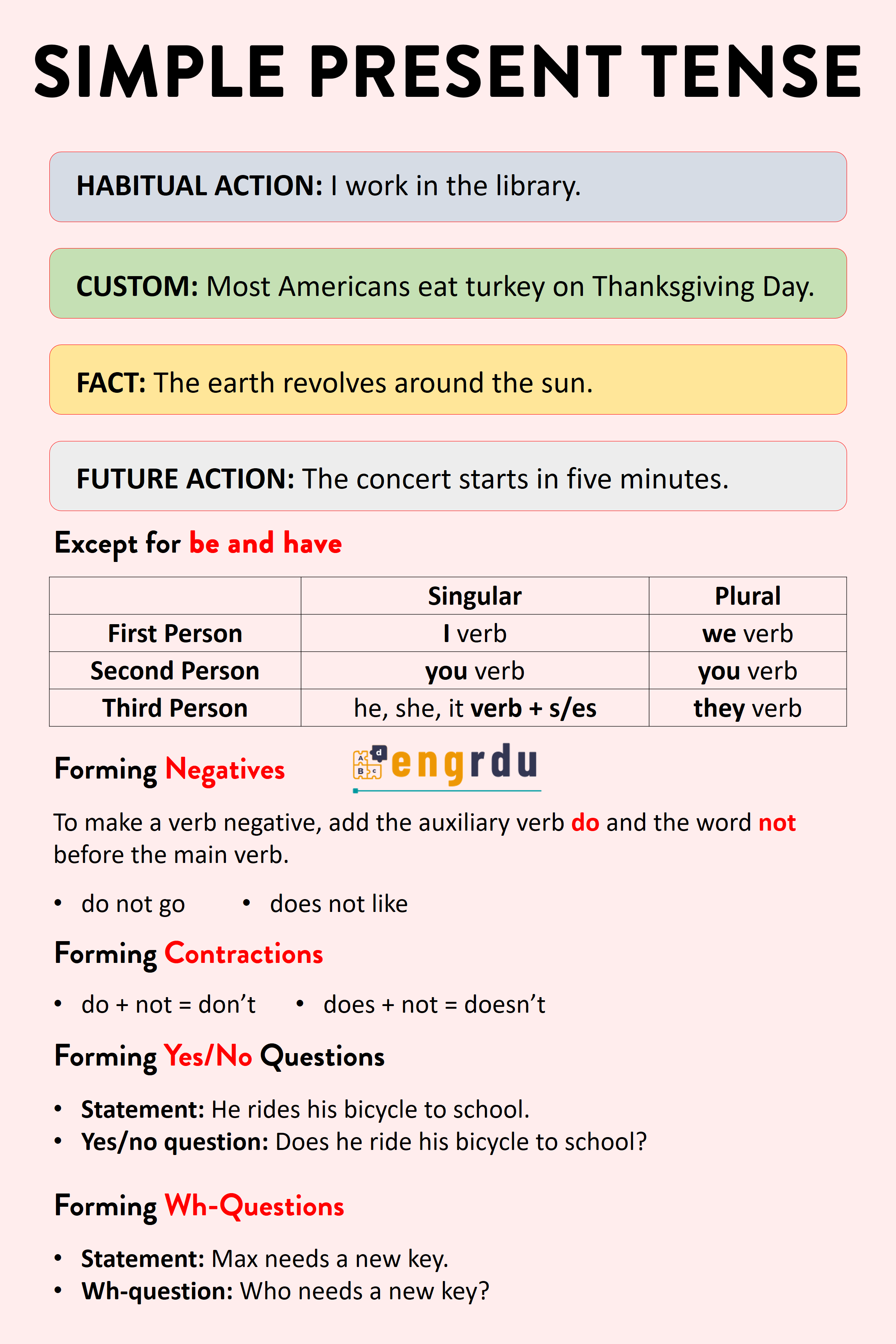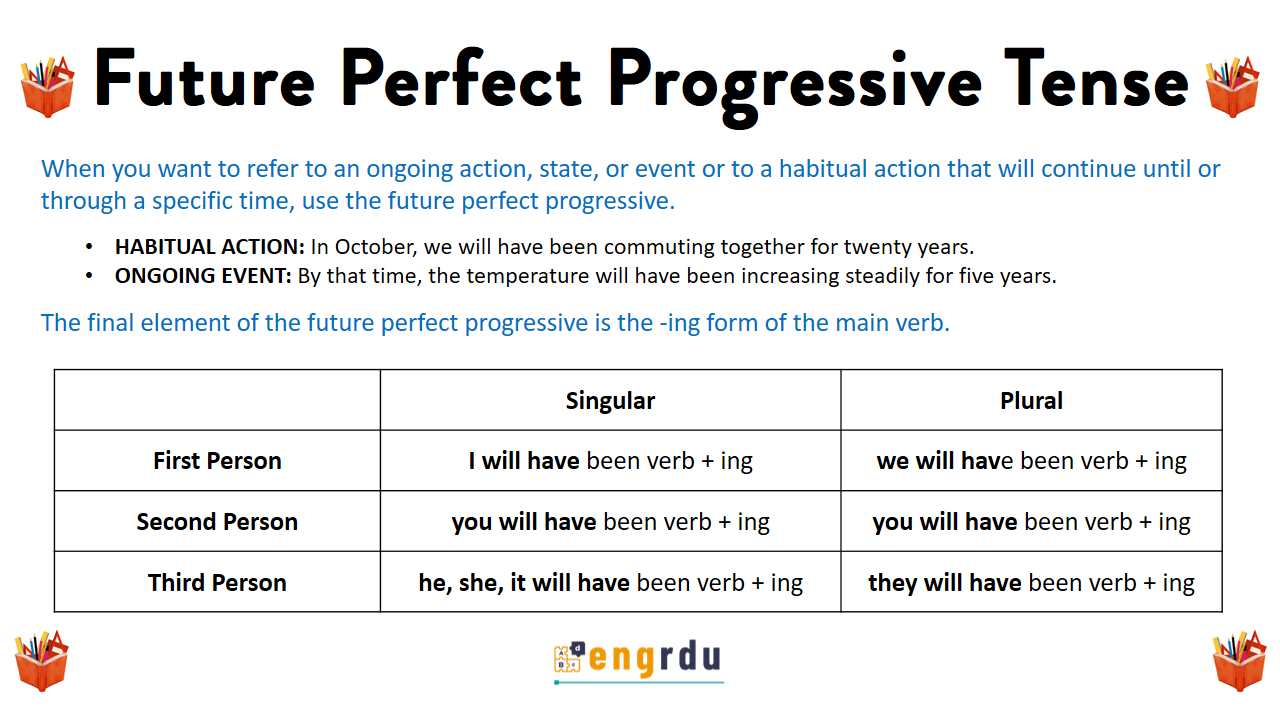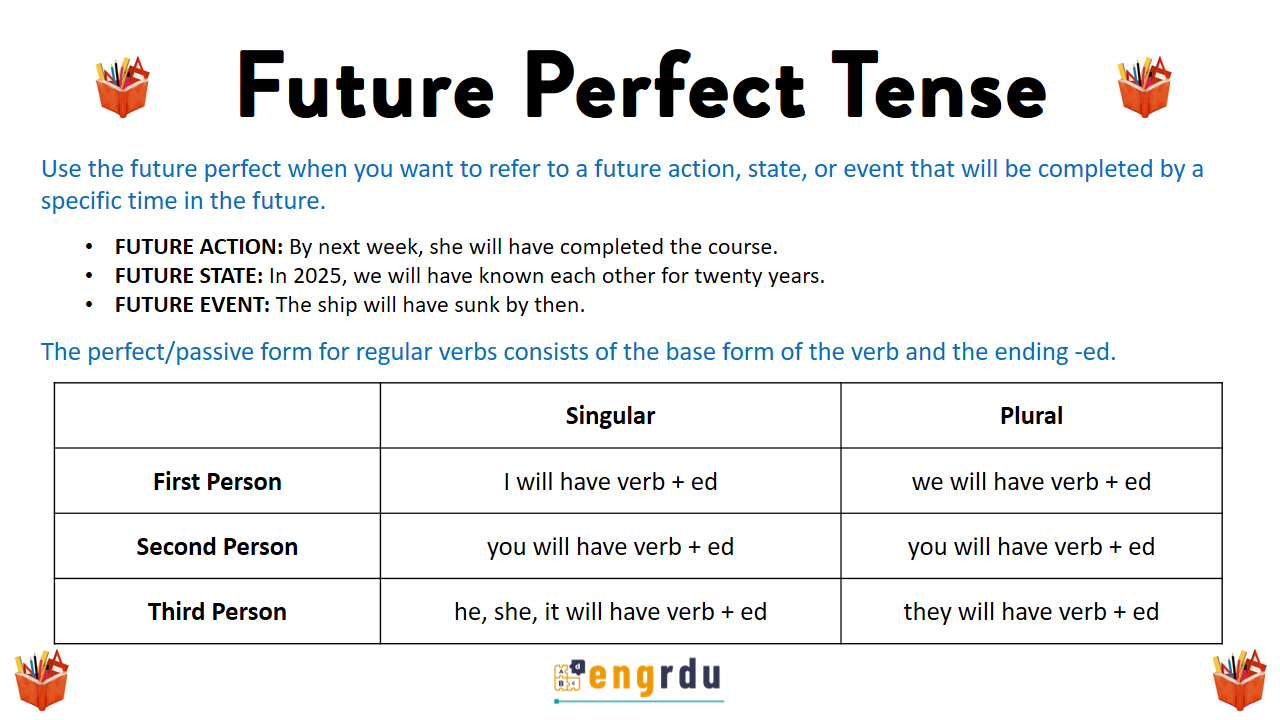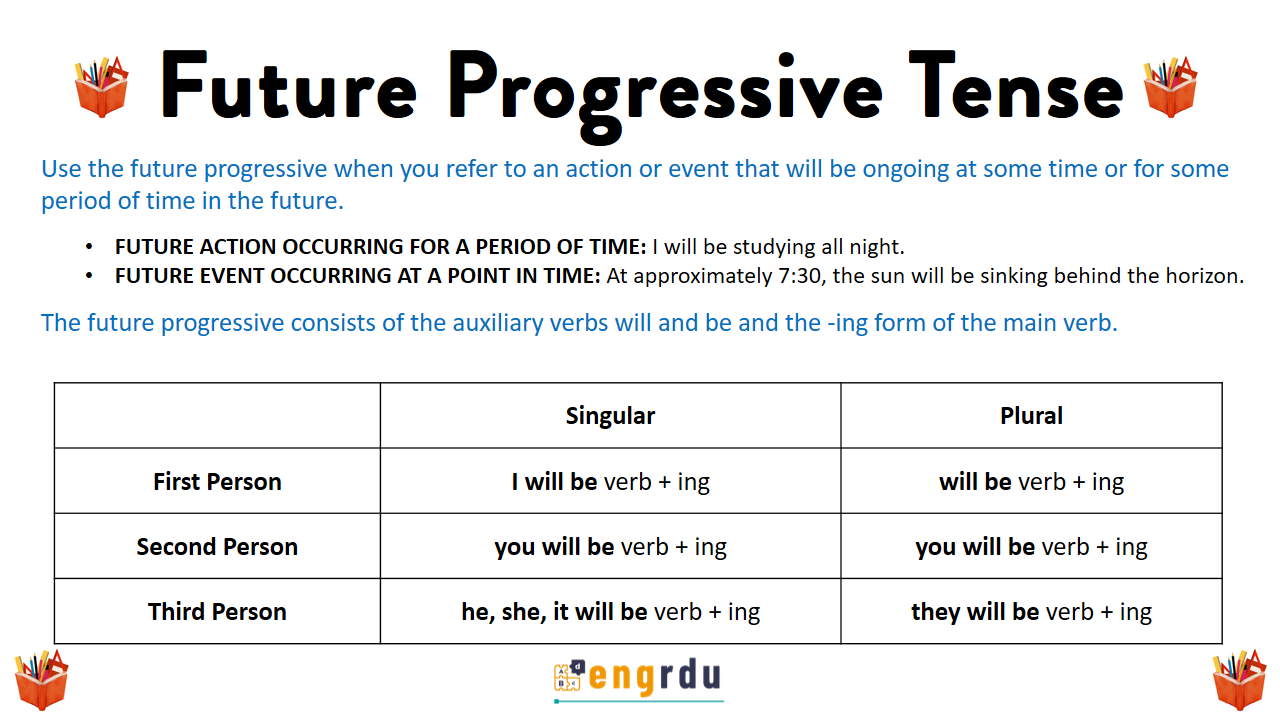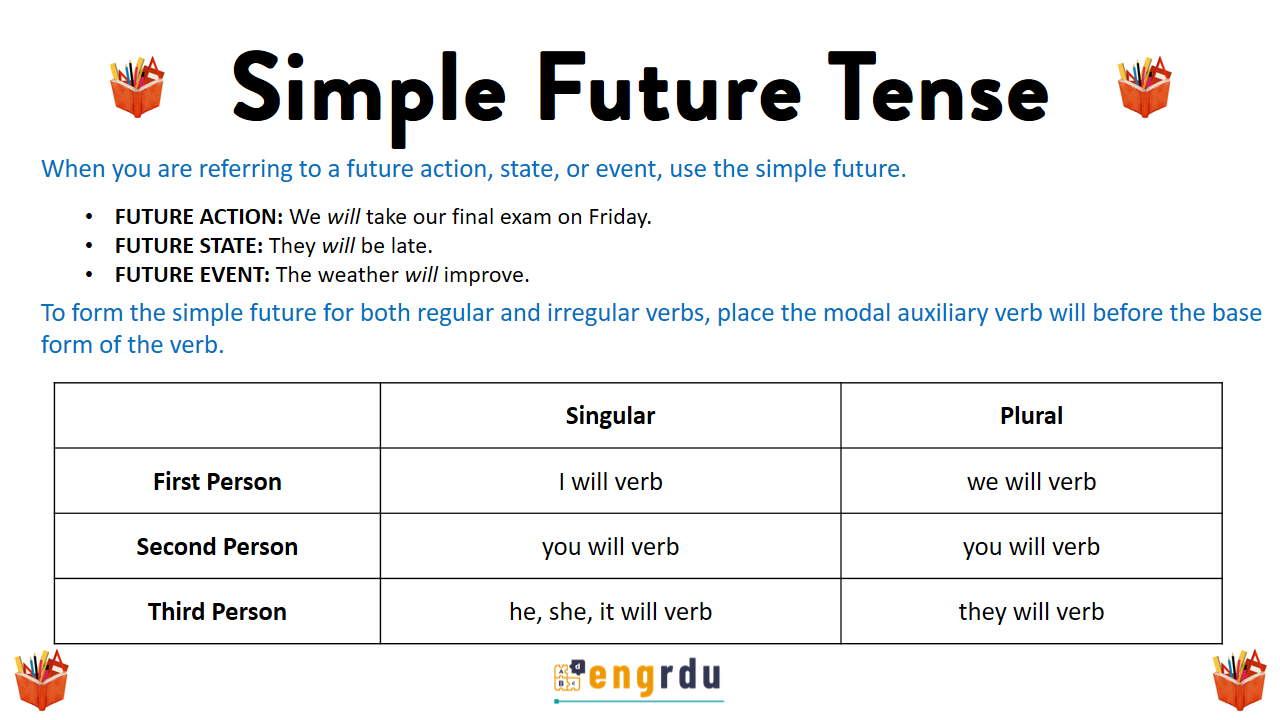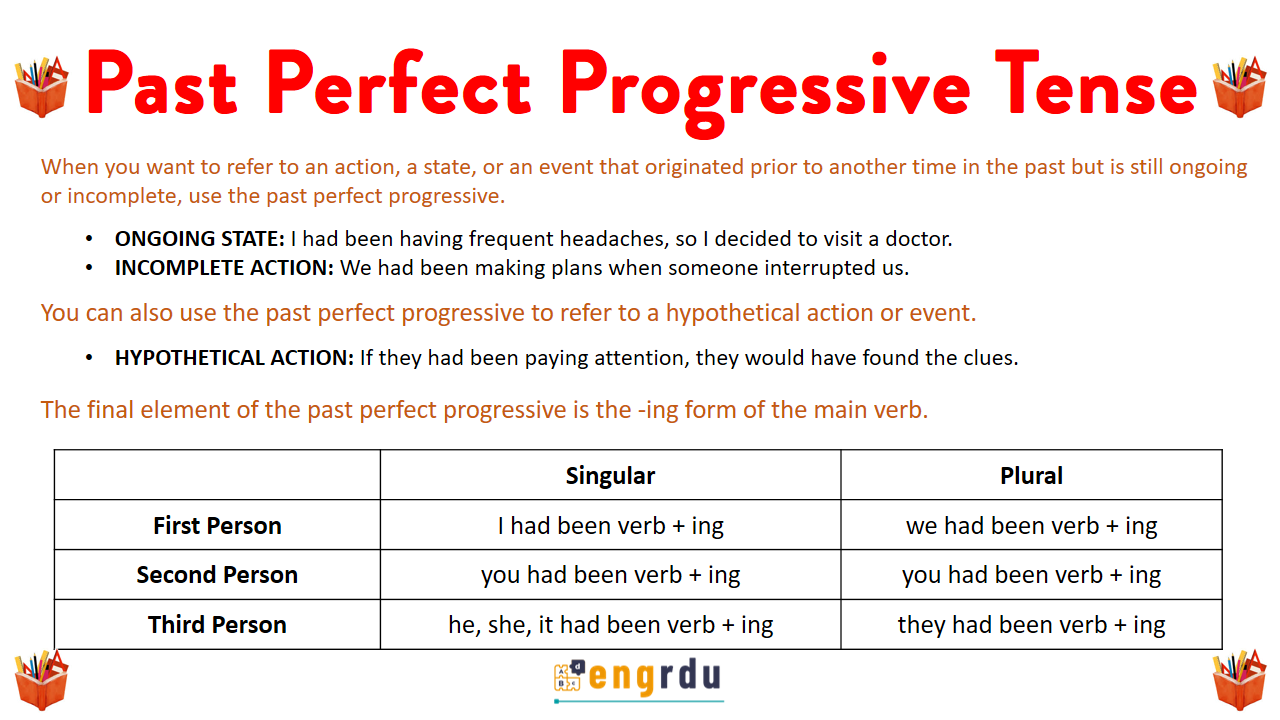In this blog post, you will learn everything about the simple present tense, including its definition, rules, usage, and formulas. This lesson is designed to help you understand the simple present tense through clear explanations and example sentences to strengthen your grammar skills. Mastering this tense is essential for improving your overall English proficiency.
The Simple Present Tense
When you refer to habitual actions, customs, and facts, use simple present verb forms.
- Habitual Action: I work in the library.
- Custom: Most Americans eat turkey on Thanksgiving Day.
- Fact: The earth revolves around the sun.
If you include a time reference, you can also use the simple present to indicate future time.
- Future Action: The concert starts in five minutes.
Except for be and have, verbs in the simple present follow this pattern:
| Singular | Plural | |
| First Person | I verb | we verb |
| Second Person | you verb | you verb |
| Third Person | he, she, it verb + s/es | they verb |
As you can see, the base form of the verb is used with the subject pronouns I, you, we, and they, and with the nouns these pronouns can replace. For example, the students take the same verb form as they. An ending, either -s or -es, is added to the verb when the subject pronoun is he, she, it, or a noun; these pronouns can be replaced. The -s ending is used most frequently. The -es ending is used after certain letters or letter combinations.
| Letters | Examples |
| s | pass + es |
| sh | push + es |
| ch | march + es |
| x | box + es |
| o | do + es |
When a verb ends in a consonant and y, change the y to i and add -es.
For example: bury ➞ buries.
In the following chart, the forms of the verb have:
| Singular | Plural | |
| First Person | I have | we have |
| Second Person | you have | you have |
| Third Person | he, she, it has | they have |
Forming Negatives in Simple Present Tense
- To make a verb negative, add the auxiliary verb do and the word not before the main verb.
| do not go | does not like |
Remember that does is used with the pronouns he, she, and it. When does is used, the main verb has no -s or -es ending.
Forming Contractions in Present Simple Tense
In English, verbs are often combined with other words to form contractions. These shortened forms include an apostrophe (’) to indicate missing letters. It is important to learn contractions because you will often hear them in conversation or see them in informal writing. Formal writing, though, rarely contains contractions.
The auxiliary verb do is often combined with not to form a contraction. Notice that an apostrophe indicates that the letter o is omitted:
- do + not = don’t
- does + not = doesn’t
Forming Yes/No Questions in Present Simple Tense
To form questions that can be answered yes or no (yes/no questions), begin the question with the auxiliary verb do. After the auxiliary verb, place the subject and the main verb.
- Statement: He rides his bicycle to school.
- Yes/no question: Does he ride his bicycle to school?
- Statement: They ride the bus to work.
- Yes/no question: Do they ride the bus to work?
Forming Wh-Questions in Present Simple Tense
Wh-questions are used to elicit specific pieces of information. They usually begin with what, who, why, where, when, how, or combinations such as how much, how many, and how often. When the question word is the subject of the sentence, the form of the question is similar to the form of a statement.
- Statement: Max needs a new key.
- Wh-question: Who needs a new key?
- Statement: My foot hurts.
- Wh-question: What hurts?
When the question word is any other part of the sentence, the auxiliary verb do comes after the question word and is followed by the subject and the main verb.
- Statement: She collects butterflies.
- Wh-question: What does she collect?
- Statement: They live on the coast of Maine.
- Wh-question: Where do they live?
Be Verb Forms, Simple Present
The verb be has three different forms in the simple present: am, is, and are.
| Singular | Plural | |
| First Person | I am | we are |
| Second Person | you are | you are |
| Third Person | he, she, it is | they are |
The word there is often used with the verb be to acknowledge the existence of someone or something. The form of the be verb is based on the subject that follows it.
- Singular Subject: There is a concert in the park tonight.
- Plural Subject: There are four rooms in the house.
Forming Contractions: Pronouns and There with am, is, and are
Contractions are often formed by combining pronouns and the verb be. The word there can also be combined with be. It is important to learn these contractions because you will often hear them in conversation or see them in informal writing. However, you should avoid using them in formal writing.
Notice that an apostrophe indicates that a letter is omitted:
- I + am = I’m
- we + are = we’re
- you + are = you’re
- they + are = they’re
- he + is = he’s
- there + is = there’s
- she + is = she’s
- it + is = it’s
Forming Negatives
To make the verb be negative, just add not.
- am not
- is not
- are not
- I’m not
- it’s not
- we’re not
Forming Contractions: isn’t and aren’t
The word not can be contracted with the verb forms is and are.
- is + not = isn’t
- are + not = aren’t
Forming yes-or-no Questions
To form yes/no questions, begin the question with a form of the verb be and place the subject after it.
- Statement: Nancy is a doctor.
- Yes/no question: Is Nancy a doctor?
- Statement: They are friendly.
- Yes/no question: Are they friendly?
To form yes/no questions with there, place there after the be verb.
- Statement: There is a gas station near the freeway.
- Yes/no question: Is there a gas station near the freeway?
Forming Wh-Questions
To form wh-questions, place the be verb after the question word. When the question word is the subject of the sentence, the form of the question is similar to the form of a statement.
- Statement: Someone is at the door.
- WH-Question: Who is at the door?
When the question word is any other part of the sentence, the subject follows the be verb.
- Statement: She is from Colorado.
- WH-Question: Where is she from?
- Statement: His birthday is July 11.
- WH-Question: When is his birthday?
Present Tenses
Past Tenses

